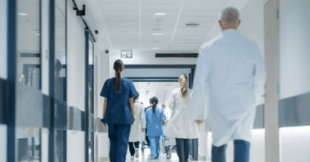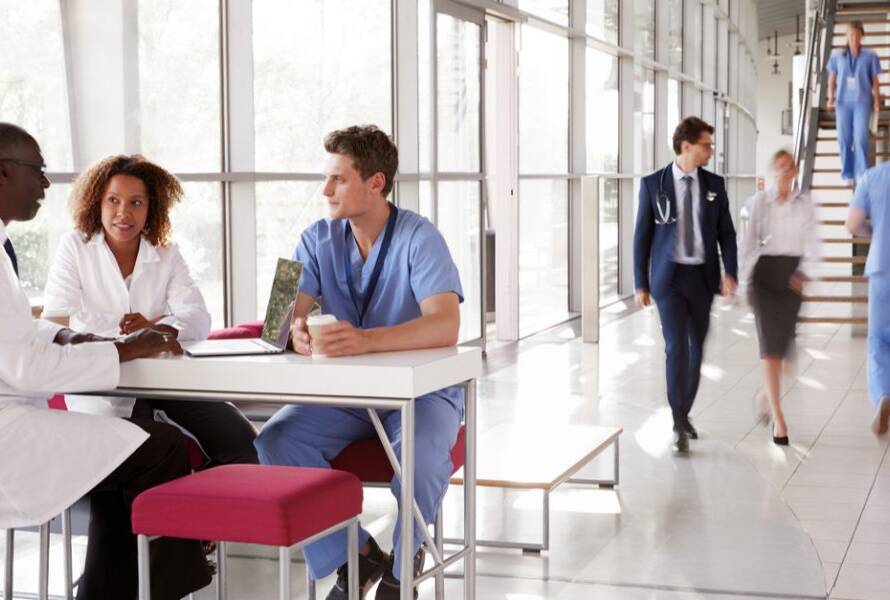
In recent years, AI has transformed many industries, including healthcare, by improving patient safety through advanced video surveillance. Traditional security cameras have long played a role in
monitoring hospital environments, but AI powered video analytics are now significantly enhancing their effectiveness. With real-time monitoring, predictive capabilities and integration with other smart technologies, AI is helping healthcare providers create safer environments for both patients and staff.
Reducing false alarms and nuisance alerts
One of the primary advantages of AI-powered video surveillance is its ability to reduce false alarms and nuisance alerts. Traditional
video monitoring systems benefit from AI as a supplement to its
native features. For example, false alarms, when occurring too
often, can lead to alarm fatigue among healthcare professionals. AI-driven video analytics can filter out non-threatening activities and detect actual incidents withgreater accuracy. By incorporating intelligent event recognition into traditional video monitoring software, it reduces the time and effort spent on investigating false alarms, allowing security and medical personnel to focus on genuine threats.
“One of the primary advantages of AI- powered video surveillance is its ability to reduce false alarms and nuisance alerts.”
Advanced video analytics for proactive patient safety AI-driven video surveillance now includes capabilities such as slip-and-fall detection and personal protective equipment (PPE) compliance monitoring. These analytics are particularly useful in healthcare settings where patient mobility issues or environmental hazards can lead to falls. By using AI algorithms to detectunusual movements or lack of proper safety gear, hospitals can proactively address risks before they escalate into serious incidents.
In addition, AI can detect aggressive behavior in real time by analyzing body language and vocal cues. Some systems integrate with sensors that detect raised voices or specific keywords that may indicate distress or a potential altercation. This proactive approach allows hospital security teams to intervene before situations
become dangerous.
Enhanced search and playback capabilities
Traditional security cameras in healthcare settings primarily serve a
retrospective function, allowing staff to review footage after an incident has occurred. In contrast, AI-powered surveillance systems operate in real-time, analyzing video feeds and integrating with other data sources to provide predictive insights. These systems can differentiate between routine activities and abnormal events. AI-driven video analytics allow healthcare providers to quickly locate specific events, individuals or objects, reducing the time needed to investigate incidents. This shiftfrom passive observation to active intervention represents a major leap forward in patient care and hospital security.
AI as a decision-making assistant in healthcare
AI is not replacing healthcare or security professionals but rather
acting as an intelligent assistant. AI-powered video surveillance systems provide real-time alerts and insights, helping hospital staff respond more swiftly and effectively to safety concerns improving overall patient care.
Moreover, AI-driven surveillance can integrate with other hospital systems, such as electronic health records (EHRs) and nurse call systems, to provide contextualized alerts. By combining data from multiple sources, AI can help prioritize responses based on the severity of the situation.
Integration with smart sensors and IoT devices
Modern AI-powered surveillance systems are designed to work in tandem with smart sensors and Internet of Things (IoT) devices.
Hospitals are increasingly using environmental sensors to monitor air quality, temperature and humidity levels in patient rooms. AI can
aggregate data from these sources and video analytics to provide a
comprehensive safety solution.
For example, a hospital utilizing AI-powered video surveillance may also integrate sensors which detect environmental anomalies such as smoke, carbon monoxide or aggressive speech patterns. This integration allows healthcare providers to respond quickly to emergencies and improve patient safety by creating a multi-layered security approach.
AI and business analytics
Healthcare facilities can use video surveillance supplemented with AI to improve their business intelligence. By examining AI data, inefficiencies and opportunities for training or process improvements and much more can be found. Healthcare is first and foremost about patient care, however the experience in a healthcare facility is felt by the patient, their friends and family and the staff so
a comprehensive analysis of the experience from admittance to release should be continuous to ensure effective and positive experience for all.
AI’s future in healthcare video surveillance
While AI has already made significant strides in patient safety, its full potential is yet to be realized. The technology is still evolving and future advancements may include even more precise predictive analytics and automation.
However, despite its benefits, AI-driven video surveillance still has limitations. The technology requires continuous training and updates to improve accuracy, and ethical considerations regarding patient privacy must be carefully managed. Hospitals must strike a balance between leveraging AI for safety and maintaining patient confidentiality.
“AI-powered surveillance systems operate in real-time, analyzing video feeds and integrating with other data sources to provide
predictive insights.”
Conclusion
AI-powered video surveillance is revolutionizing patient safety by reducing false alarms, providing real-time analytics, improving search capabilities and integrating with smart hospital systems. As
AI continues to evolve, its role in healthcare will become even more
significant, helping to prevent incidents before they occur and enabling healthcare providers to deliver better, safer patient care. By embracing AI-driven solutions, hospitals can create more secure
environments that benefit both patients and medical staff alike.
Alex Wojcik
Alex Wojcik is the Salient Regional Sales Manager for our East Central Region. With nearly a decade of experience in the security industry, he excels in consultative sales and delivering customized security solutions. Previously, Alex held key roles at Gallagher Security and LenelS2, where he developed strong channel partnerships and a reputation for outstanding client support. Based in the Detroit Metropolitan Area, Alex is committed to helping clients achieve their security goals with tailored solutions and exceptional service.


